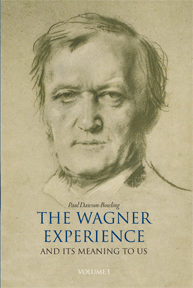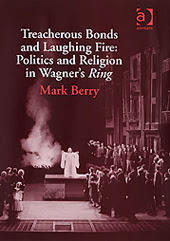 |
| Toscanini with Wieland Wagner |
David Denby, at the New Yorker, discusses and reevaluates Toscanini while simultaneously reviewing Harvey Sachs' new biography of the conductor - released to coincide with the 150 year anniversary of Toscanini's birth. What is the most familiar piece of classical music? The most thoroughly roasted chestnut? A piece so overplayed that it has passed into the automatic schlock-recognition zone of every American? Surely it is the final, galloping section of Rossini’s “William Tell” Overture—the Lone Ranger music, the musical image of righteousness on horseback. The music seems almost a joke. But there was one conductor who rode this piece as if his life, and the lives of his players, depended on it.
I remember my parents calling me out of my bedroom. The year was 1952, so I must have been eight. On our television, a tiny black-and-white screen sunk into a large mahogany console, an old man with a full head of white hair and an elegantly clipped mustache was beating time with his right arm and leading a furious performance of the horse music. I certainly knew the tune (“The Lone Ranger” TV series began running in 1949), but I didn’t know it could sound like this—the skittering string figures played with amazing speed and clean articulation, the entire piece brought off with precision and power, the muscular timpani strokes outlining phrases and asserting a blood-raising pressure under the crescendos. You can easily see this performance right now, exactly as I did, on YouTube: Arturo Toscanini conducting the NBC Symphony in the televised concert of March 15, 1952. If you listen with good headphones, the sound, though hard-edged, is solid and clear, and the astonishing performance comes through. Toscanini was then two weeks shy of his eighty-fifth birthday.
For many years, Arturo Toscanini was the pinnacle of musical excitement for classical-music lovers in this country—and also for many casual listeners, who enjoyed the sensation of having their pulse rate raised. He was at the center of an American experiment in art and commerce that now scarcely seems credible: late in the Depression, in 1937, RCA, which owned two NBC radio networks, created a virtuoso orchestra especially for him, and kept it going until 1954. The NBC Symphony gave concerts in New York that were broadcast on national radio, and then, starting in 1948, on national television.
RCA hyped Toscanini, and the media responded gratefully, some would say shamelessly: Toscanini was widely profiled and photographed, lionized and domesticated by Life and countless other publications. His NBC years were probably the high-water mark of classical music’s popularity in America. Some of that popularity was doubtless swelled by the excruciating and often condescending music explainers ubiquitous on the radio, in books, in schools, all eager to sell great music to the masses. Still, it was not unusual for earnest middle-class children to struggle with an upright at home, to sing Handel in a school chorus, to play Mendelssohn in the school orchestra. At the time, both amateur and professional musicians, listening to the NBC Symphony broadcasts, did their best to play along.
RCA issued dozens of recordings made by Toscanini and the orchestra (most of them from broadcasts), as well as selected performances made with the New York Philharmonic and the Philadelphia Orchestra, with Toscanini’s white face and hands emerging from solid black in Robert Hupka’s mystically glamorous album photographs. Toscanini’s way with music by Beethoven, Berlioz, Brahms, Verdi, Wagner, and Debussy could make the work of other conductors seem dawdling, nerveless. He famously stuck to the score, ending arbitrary practices and interpretive excesses. He drove to the climax; lyrical details were suavely caressed but pressed into the onward rush. The sound he produced with any orchestra was lean, transparent, surging, radiant. “Architecture with passion” was what the young pianist Rudolf Serkin heard in a performance of the Brahms Second Symphony. Other celebrated conductors, including Bruno Walter, Pierre Monteux, and, at times, Wilhelm Furtwängler, acknowledged that he was the greatest of conductors—some said “incomparable.” Having played the cello in the first performance of Verdi’s “Otello,” in 1887, Toscanini is also the invaluable link between the nineteenth century, when so much of the operatic repertory was written, and the modern opera house.
In the nineteen-thirties and during the war period, admiration for him went well beyond music. Opera, always central to the culture of Europe, became at that time a matter of nationalist bluster and political maneuvering. After 1931, Toscanini refused to conduct in Italy, resisting Mussolini, who dangled honors and official posts; he was thereafter reviled in the Fascist press. Hitler pleaded with him to honor holy German art and preside over the Wagner rites at the Bayreuth Festival. When Toscanini turned him down, his recordings and broadcasts were banned in Nazi Germany. Instead of going to Bayreuth, he worked in 1936 and 1937 with the newly formed Palestine Orchestra (later the Israel Philharmonic), an ensemble largely composed of Jewish refugees. Toscanini did not make speeches; he stuck to business. But his sentiments were widely known, and he became a lodestar for anti-Fascists. After the war, Isaiah Berlin pronounced him “the most morally dignified and inspiring hero of our time—more than Einstein (to me), more than even the superhuman Winston.”
In recent decades, however, Toscanini’s musical reputation has faded badly. Some of his old fans have shifted their loyalty to the work of other conductors—to Furtwängler, say, whose soulful expressiveness and spontaneity have been held up as musically and emotionally superior to Toscanini’s fiery propulsiveness. In the revisionist view, Toscanini rushed through passages that other conductors would turn into contemplation or mystery or sheer loveliness. He offered a maximum of line, a minimum of texture; he was all athlete, no philosopher. Beethoven and Verdi formed his aesthetic, and he never moved into the twentieth century, ignoring the dazzling rhythmic and harmonic explorations of Stravinsky, Bartók, Schoenberg, Berg.
The critic and composer Virgil Thomson complained of a lack of personal culture in Toscanini, which allegedly resulted in a “streamlining” of the classics. Theodor W. Adorno, the Marxist philosopher and theorist of twelve-tone music, appalled by Toscanini’s radio concerts and his employment by corporate America, tagged him as a proponent and victim of commodity-fetish capitalism. In effect, Adorno said, Toscanini turned every piece into a chestnut. Picking up from Adorno, the music historian Joseph Horowitz, while acknowledging Toscanini’s greatness in “
Understanding Toscanini” (1987), ridiculed his temperament and public persona, casting him as the false messiah of the middlebrow music-appreciation racket. Both Adorno and Horowitz indulged in scathing contempt for radio listeners in the Toscanini era. It incensed them that classical music—for a brief period—became part of mass culture.
































